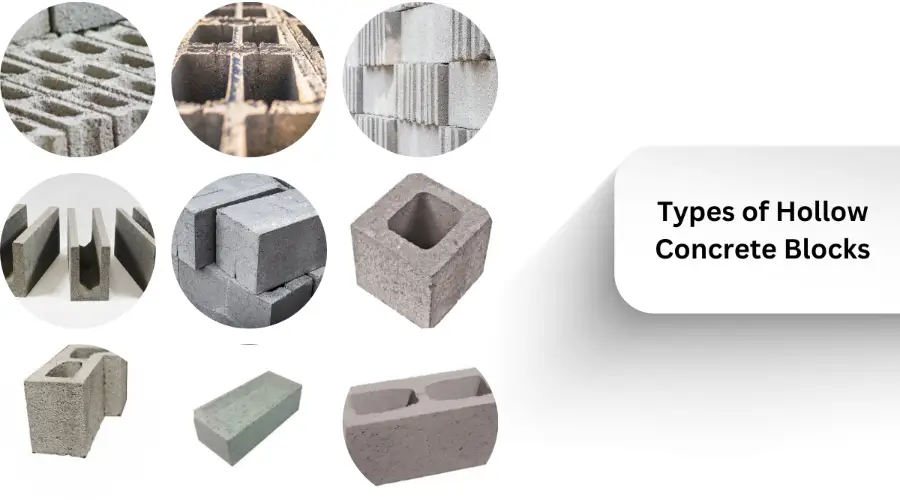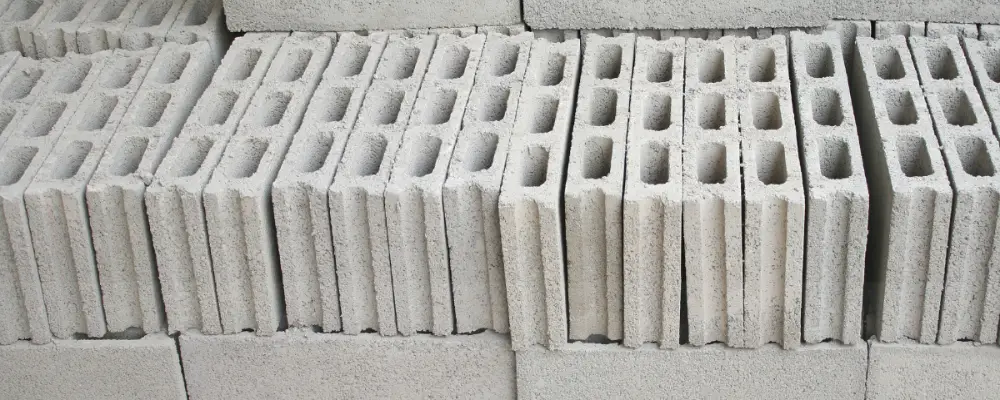Concrete bricks are one of the most widely popular and highly used building materials. Their physical properties and versatile uses make people choose concrete bricks over other brick types. There are two types of concrete bricks- solid and hollow, where hollow bricks are a game changer in the construction field. Here we take a look at what is hollow cement bricks are and everything you need to know about them.
What is Hollow Cement Brick?
A hollow concrete block is a concrete brick with hollow spaces within the structure. It is used for numerous construction purposes and is made with a combination of cement, sand, and other additive materials. Hollow concrete blocks offer a wide range of advantages and come in various options.
Application of Hollow Cement Bricks
- These bricks are most commonly used for both load-bearing and non-load-bearing walls in residential, commercial, & industrial buildings.
- These bricks, when filled with concrete and reinforced steel bars (RCC) in the pores of the block, can be used in retaining walls.
- They can be used for the construction of boundary walls in residential and industrial buildings.
- By adding different colours, patterns, and textures, the hollow blocks can be used as cladding facades.
- They provide good thermal insulation; thus, they are suitable for all types of weather conditions when used as an external wall.
- They are known for their load-bearing capacity and water resistance, making them suitable for low-level or underground structures.
- They incorporate architectural elements and can be used for garden walls, planter boxes, steps, and other internal and external decorative spaces.
Physical Properties of Hollow Cement Blocks
Density
The density of the hollow concrete blocks varies based on the grades of the bricks. Grade A bricks have more than 1500 kg/m³, Grade B bricks have below 1500 kg/m³ and Grade C bricks have around 1000 kg/m³.
Compressive Strength
The minimum compressive strength of the hollow cement bricks varies from 3.5 N/mm² to 15 N/mm². The strength of the bricks varies depending on the grade, where high-grade bricks have high compressive strength, while low-grade bricks have lower compressive strength.
Water Absorption
Hollow concrete blocks have a low water absorption rate of not more than 10%. This makes them ideal for water-prone areas and underground structures.
Dry Shrinkage
The dry shrinkage of the hollow block is too low, which is not higher than 0.06%.
Types of Hollow Concrete Blocks

Stretcher Block
These blocks are laid along the length parallel to the face of the wall and are used to join the corners in the masonry.
Pillar Block
It is a double-corner block used when both the ends of the corner are visible. They are widely used for the construction of piers or pillars.
Lintel Block
It is used for the top portion of the doors and windows that bear a top load. They are laid along the length of the block, and the grooves are filled with reinforced concrete. Since they are used for the provision of beams, they are also called beam blocks.
Jamb Block
These bricks are used to connect the stretcher and corner blocks and are essential where elaborate window openings are required.
Column Block
This is a square block that comes with a single hole. They are stacked one over the other, and the holes are filled with reinforcements to form a column.
Corner Block
These blocks are generally placed at the corners or the ends of windows and door openings in the exposed exterior walls. They are laid along the length of the block and run parallel to the wall.
Partition Block
These blocks are generally used to build partition walls and other non-load-bearing walls. They have a larger height than breadth, making them ideal for partition walls of less thickness.
Frogged Brick Block
This block contains a frog on top of the brick, where the header and stretcher have an excavated part. The frog in the block helps to hold mortar and to provides a strong bond with the overlying block.
Bull Nose Block
This block is similar to a corner block; however, one side of the block has rounded edges at corners like a bullnose, thus called a bullnose brick.
Advantages & Disadvantages of Hollow Cement Bricks
Advantages
- These bricks are lightweight and easy to handle, reducing the use of skilled labourers and eventually lowering the labour cost.
- It is easy and fast to construct, reducing the overall construction time.
- They can be used for both load-bearing and non-load-bearing walls of the building.
- They have high thermal and sound insulation properties.
- They are highly durable, and adequate curing increases the compressive strength of the block.
- They need low maintenance.
- They have a low water absorption ratio and can be employed in ground-level structures in water-prone areas.
- Reinforced concrete and steel bars are easy to hold within the voids.
- They are eco-friendly bricks that consume less energy and use fly ash as a raw material.
Disadvantages
- These blocks are expensive when compared to clay bricks.
- They are not as strong as solid concrete bricks, and their load-bearing capacity is limited.
- They may not be suitable for construction projects in seismic areas.
- They are more susceptible to water damage and cracking.
Manufacturing Process of Hollow Cement Bricks
Proportioning
Raw materials such as cement, sand, aggregates, and additional fillers are chosen according to the proportion and the quality of raw materials. According to Indian Standards (IS), the cement-sand ratio should be 6:1 in terms of volume.
Mixing
The cement, sand and fly ash (commonly used aggregate) are blended using mechanical mixtures until they attain the consistency needed to be molded.
Molding & Compacting
The concrete mixture is transferred to the required mold and compacted to fill air pockets and eliminate excess water in the concrete. The compaction is done under adequate pressure to get the right shape.
Curing
The molded and compacted bricks are kept idle in a shelter away from the sun or wind for 24 hours. The bricks are then cured under moisture for 21 days in a curing yard to achieve maximum strength.
Drying
After curing, the hollow blocks are left to dry gradually using the drying machines or manually under the shade.
Conclusion
Hollow concrete bricks are eco-friendly construction materials that don’t consume excess energy and are free from carbon emissions. These bricks come in various shapes and colours and are suitable for diverse construction processes. They help in rapid construction and are easy to lay. They provide numerous advantages to construction, thus making them one of the most preferable construction materials, effectively replacing traditional bricks.

